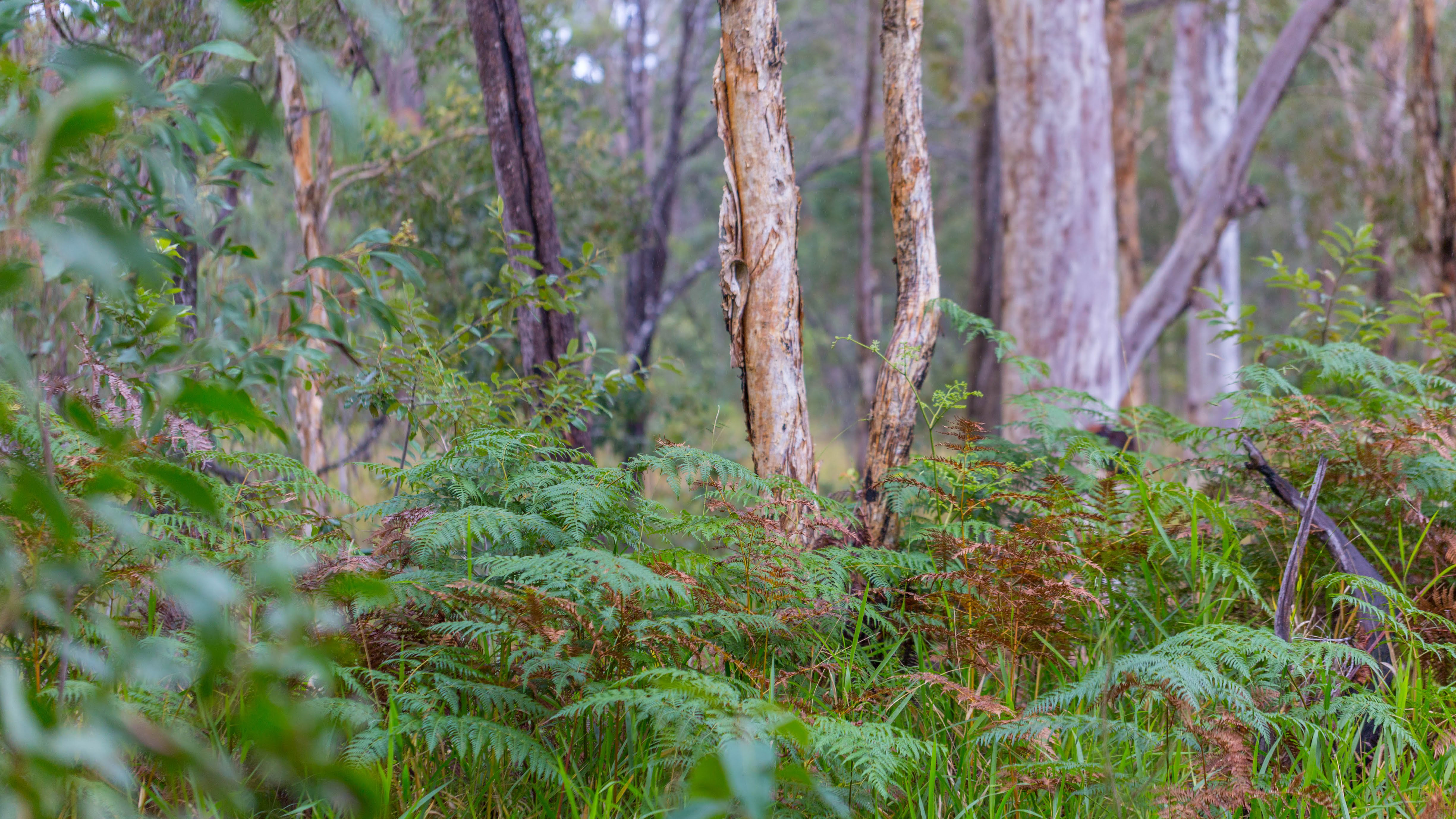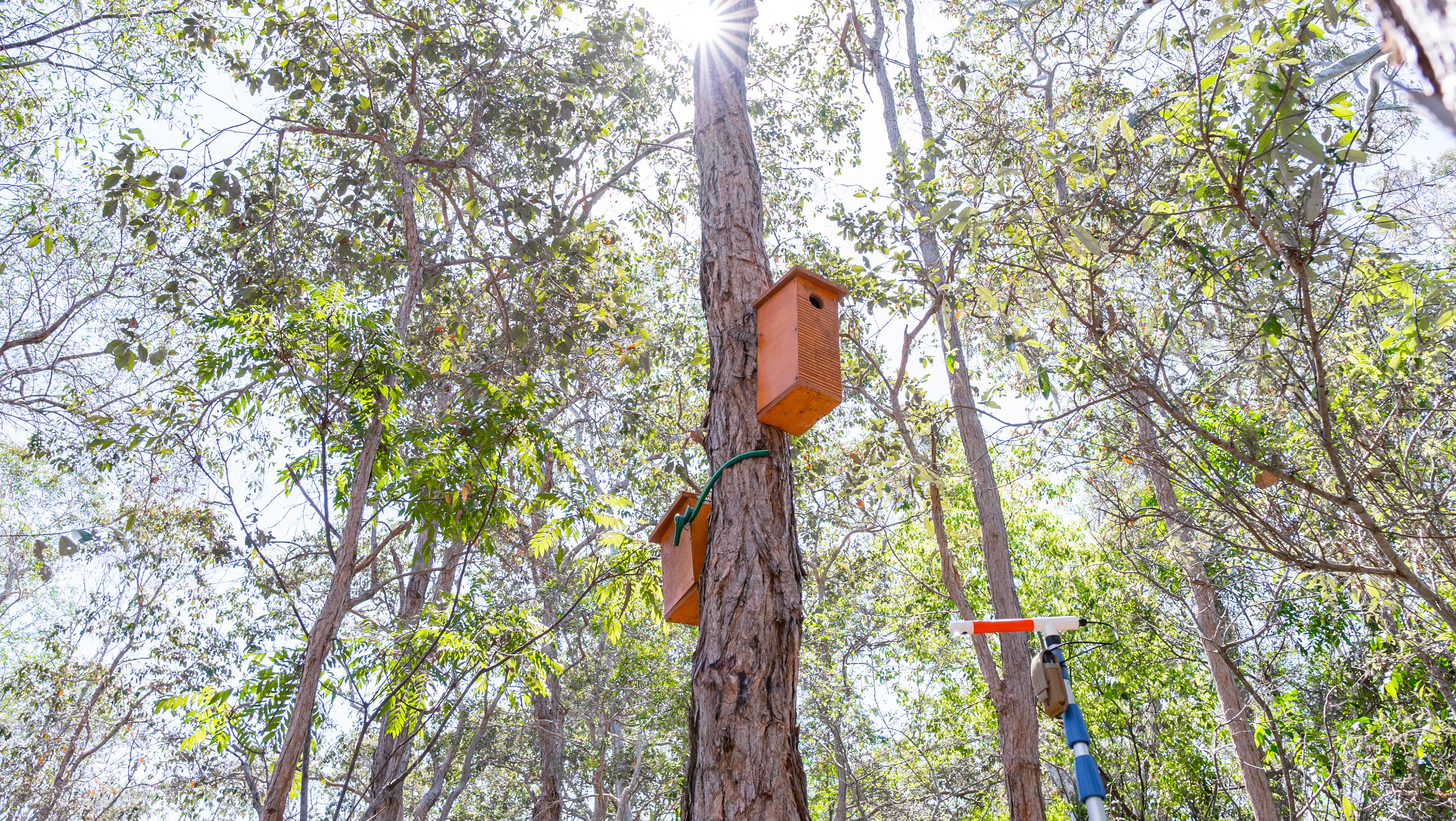Eucalyptus woodland fern Lindsea sp.
Carniverous sundew Drosera spatulata flower
Native Peas and legumes are usually fast-growing, prolific flowering and are extremely important sources of nectar for pollinators. They provide food in the form of their beans and they fix nitrogen into the ground which is beneficial for neighbouring plants. Acacias or wattles are in a subfamily of Peas and Legumes and also have these attributes though their flowers are completely different. Pictured is the poor man's pea Gomphlobium pinnatum
Hyacinth Orchid Dipodium variegatum is one of the many terrestrial orchid species native to Australia. They are only found growing in eucalyptus woodlands because of an incredibly important relationship they have with a particular type of fungi. These plants live most of the year underground solely relying on their fungi partnerships to get them through. A lot of Fungi and plants exchange energy for nutrients in a mutually beneficial relationship where each has their own to contribute to the others survival. Plants can have multiple relationships with many fungi all at once sometimes. Fungi can also kill harmful soil pathogens that would otherwise affect the health of plants as well. This orchid is also pretty much leafless and is extremely elusive to find until made noticeable when in bloom.
The Slug lily Murdannia graminea
Another native Pea and important pollinator and fruit plant The purple pea bush
Hovea acutifolia
A relative of the Banksia Grevillea and Macadamia nut this beautiful Hakea florulenta has modified roots adapted to increasing the intake of phosphorous in low phosphorous soils commonly found in some parts of Australia. This is one of the reasons that you need Australian soil mix for growing natives in pots and using suitable native fertiliser low in Phosphorous as normal levels are toxic for some plants such as these species.
Queensland Wax Flower Philotheca queenslandica a plant not found anywhere else on the planet like many other endemic species to SEQLD
A typical freshwater wetland in SEQLD
Heath milkwort or pink matchheads Comesperma ericinum.
Comesperma is a genus of about 25 species all endemic to Australia
Grevillea reptans one of the indigenous Grevillea species found in our local area. Australia has some wonderful species of Grevillea but our country is so huge and species not local eg. say from WA are like plants coming from another country ecologically speaking. Cultivated Grevilleas are so popular in mainstream nurseries. Unfortunately the large flowered Grevillea cultivars can encourage larger more dominating nectar-feeding birds from our gardens which dont help all the other shier smaller bird species.
Westringia erimicola is a local species. Westringia fruiticosa a very common cultivated and landscaping shrub which is a species from Victoria
Psychotria loniceroides
Hairy Pyschotria is found growing in the ecotone of rainforest and eucalyptus and has edible fruits March/August which are as furry as its leaves
Pig face or Carpobrutus glaucescens has edible flowers and leaves. It is found growing in coastal areas on sand dunes
Dodonaea triquetra also known as a Hop bush was one of the many species used as a hop alternative. It is commonly found in Eucalyptus forest. This plant has been known to be used medicinally for various uses as well as being a bit of a favourite amongst local parrot species.
The many colors of ripening bean pods of Acacia falcata
The fringe lily Thysanotus tuberosus has a crisp tasting edible root
Polymeria calycina is a delicate vine found in Eucalyptus forest



